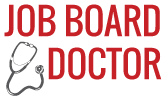What are the drivers of change in the job board industry?
 I’m a very lucky guy. How so? I have the privilege of working with dozens of job boards and recruiting software companies. I’m not locked into a single site or sector – but I am continually focused on the job board industry at both the micro and macro level. I don’t see everything, of course – but I am able to see a lot.
I’m a very lucky guy. How so? I have the privilege of working with dozens of job boards and recruiting software companies. I’m not locked into a single site or sector – but I am continually focused on the job board industry at both the micro and macro level. I don’t see everything, of course – but I am able to see a lot.
So….what do I see?
Change. The job board industry is going through the most significant amount of change, reorganization, and growth since its emergence in the mid 1990s. Acquisitions, expansion, evolution, failure – it’s all happening right now, and I expect the current pace of change to continue for several years. To put it bluntly, we’re in the midst of a market ‘adjustment’ – and those always create opportunities (and danger).
What are the drivers of change in the industry? Let’s take a look:
- Platform changes: The desktop has lost its grip on users, and mobile devices have benefited. Tablets also seem to be replacing laptops (at least for some applications). More people are turning their homes into wireless networks that connect their computers to audio and visual devices (not to mention appliances). Even cars are connected to the net. So if you don’t have a keyboard, how do you search for your next job on a traditional site? Good question.
- Money: The recession is slowly (and reluctantly, it seems) fading away. In its wake are hundreds of companies with piles of cash and thoughts of acquisitions in their 12 month plans. Putting talented people and employers together continues to be lucrative – so investment and acquisition dollars are now chasing those companies in the online recruiting biz that actually make money. Ahem – job boards tend to fall into that category. If you’re a solid niche site with happy customers, you already have suitors knocking on your door.
- Pent-up demand: You could say this is the other side of the acquisition coin. Many job board owners had so much “fun” during the last 4 years that they’re ready to sell. These won’t be fire sales – but interested buyers will definitely find interested sellers.
- Social recruiting: All recruiting is social, of course – but ‘social recruiting’ now means recruiting with Twitter, LinkedIn, et al. I’d argue that social recruiting has put the ‘sexy’ back in recruiting, at least in the employer world. Smart job boards realized this and incorporated social tools into their offering. Those that didn’t are finding that their offerings aren’t ‘sexy’. Social tools will continue to drive functional and technical changes in job boards.
- Job seeker expectations: Where are they looking? How do they conduct a job search? What makes them act (or not)? How much will they put up with to find the ephemeral ‘perfect job’? These questions drive the creation of hundreds of job sites every year – sites that answer these questions better than anything else (at least in their founders’ minds).
- Employer expectations: Why is applicant quality low? Why does hiring cost so much? Why does hiring take so long? Why change anything? These questions also drive the development of hundreds of ‘solutions’ every year. Sometimes, some of them work.
There you have it. The drivers of change as I see them. What did I miss?
[Want to get Job Board Doctor posts via email? Subscribe here.]. [Check out the JobBoardGeek podcast archive!]This Post Has 7 Comments
Comments are closed.

The combination of your ‘Platform’ that is going mobile faster and faster, and ‘Social’ (aka Sexy 🙂 ) is going to be interesting increasingly going forward. I kind of have the feeling that job boards will ‘live’ within the social sites. A bit like Branch Out or Be Found, but also tightly integrated with ATS’es that will also get their way into the Facebook-ish platform via some ’Careers App’ on a company page or something similar.
I think you have something there, Ivan. Job boards moving from being site-specific services to services existing in social sites or ‘the cloud’ or wherever the job seekers tend to congregate.
Our thought is the main driver in the job board space will be product architecture and that most job boards won’t be nimble enough to meet changing data exchange needs that the Cloud/APIs/Mobile/Big Data/etc require.
The current database structures, lack of a service-oriented architecture, and poor storage/retrieval/processing systems deployed by the major players are simply not up to the data demands that will be put upon them to compete in the near future. Globalization, atomization of roles (skill oriented, distributed, project based), growth in signals to process, and new speed requirements, all require more nimble systems. Most current job boards won’t make the necessary changes via infrastructure investment and will be ill-positioned to compete.
Bill,
Platforms have little to do with the problems of data exchange. I can whip up an API to any archane platform out there from fix-length COBOL files to EAV to SQL.
The problem is that the business models are changing so fast that little of consequence can be relied upon. Today’s LinkedIn free open API is tomorrow’s non-existent or high cost facility. Same is true for all the players.
Facebook by the way will be the worst of these because it has so much pent up expectation. I’ve written an Facebook job posting facility (on Codeplex) that I’ve left open source simply because I know it’s unmaintanable in the face of changes within Facebook. Facebook internally is a mess (an EAV mess).
So what product architecture is it that can solve a problem that is a business model problem and not an architectural problem?
Hi Gregg,
Excellent points. I’m pretty sure that we’d both agree that if most of the current job boards were built today they would be built differently. Although, COBOL is plenty capable, I’m not seeing many new consumer facing web sites being built in it (in small part because COBOL developers tend to be more expensive but also for the myriad of reasons why CTOs have preferences about one programming environment vs. another). It’s not that one can’t bend just about any programming language to perform just about any task but that certain environments, for cost/time/speed reasons, are better than others.
If a job board has a less than optimal architecture (defined as one that they would not select if they were building their site today), then their ability to hire and their cost in terms of time/speed, is different than a company that has a product built in an optimal environment. This changes their ROI calculus in iterating their site, exploring new business models, and other consideration that have a dependency on changes to their existing code base. It does not mean that they can’t do the same things, it’s just that it’s more expensive. For example, a company that uses EC2 thinks very differently adding to server loads than a non-cloud based company.
Most of the product managers/CEOs of job boards that I’ve met are frustrated by the slow rate of changes to their products and, I believe, will be more likely to assume higher costs to change their products than new competitors will.
You’re absolutely right that just about any architecture can be repurposed to accommodate any new business model. I agree that it’s the business model and not the architecture that matters. My belief, though, is that because of their architecture, most job boards won’t make the changes they need to make to remain competitive.
[…] […]
[…] […]